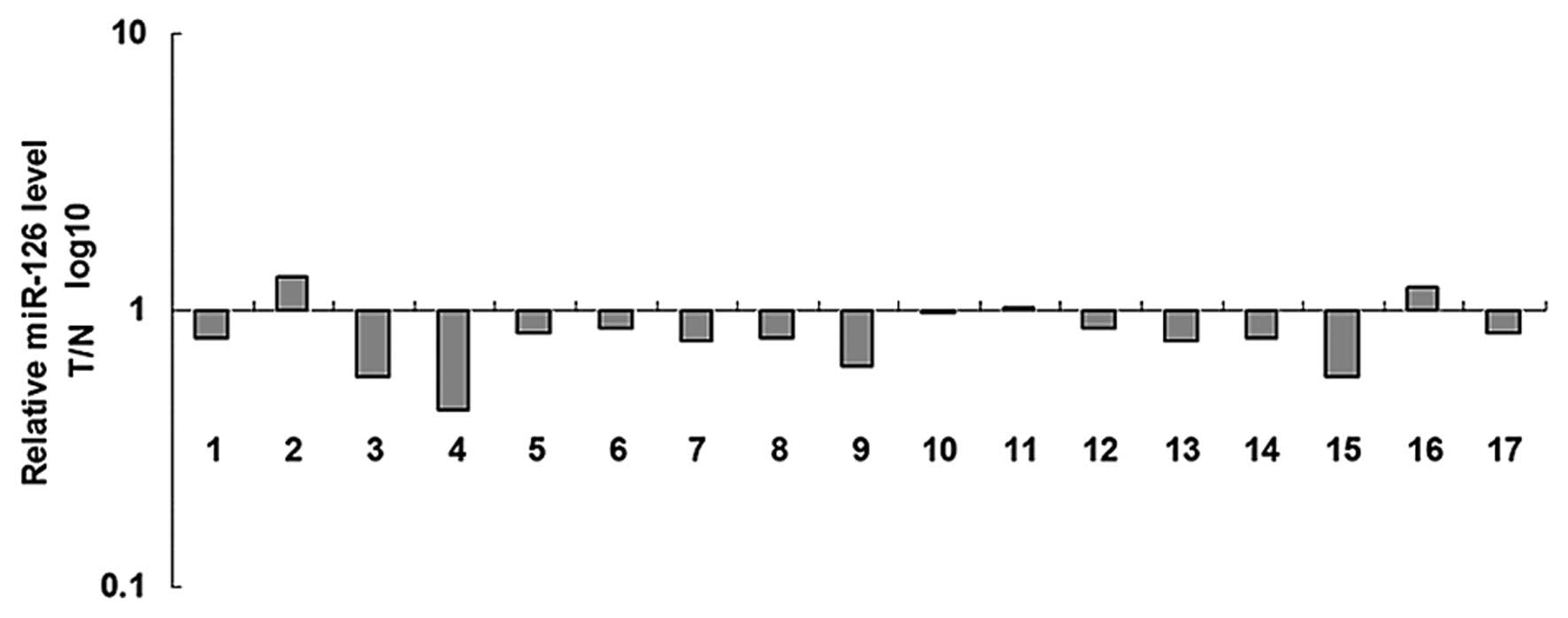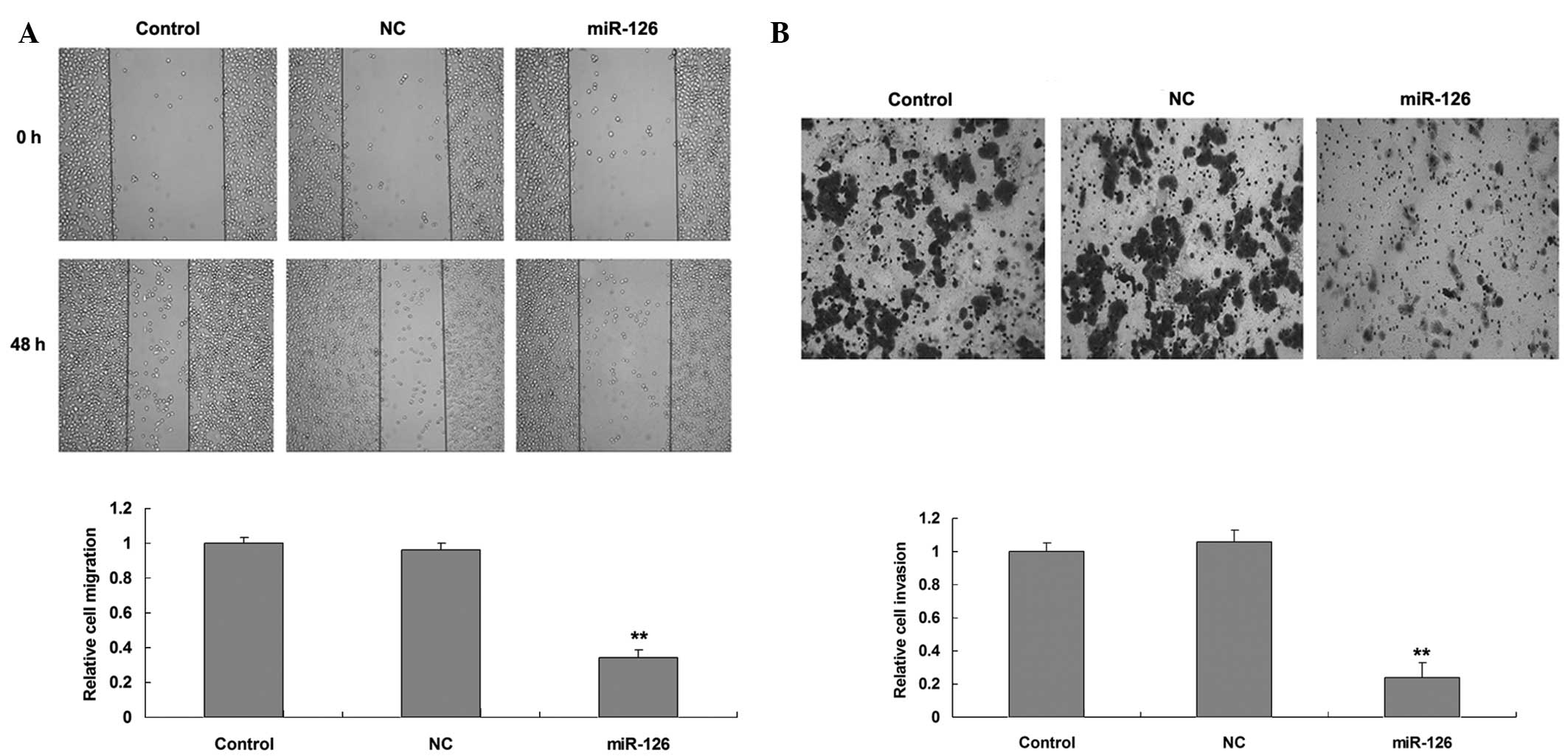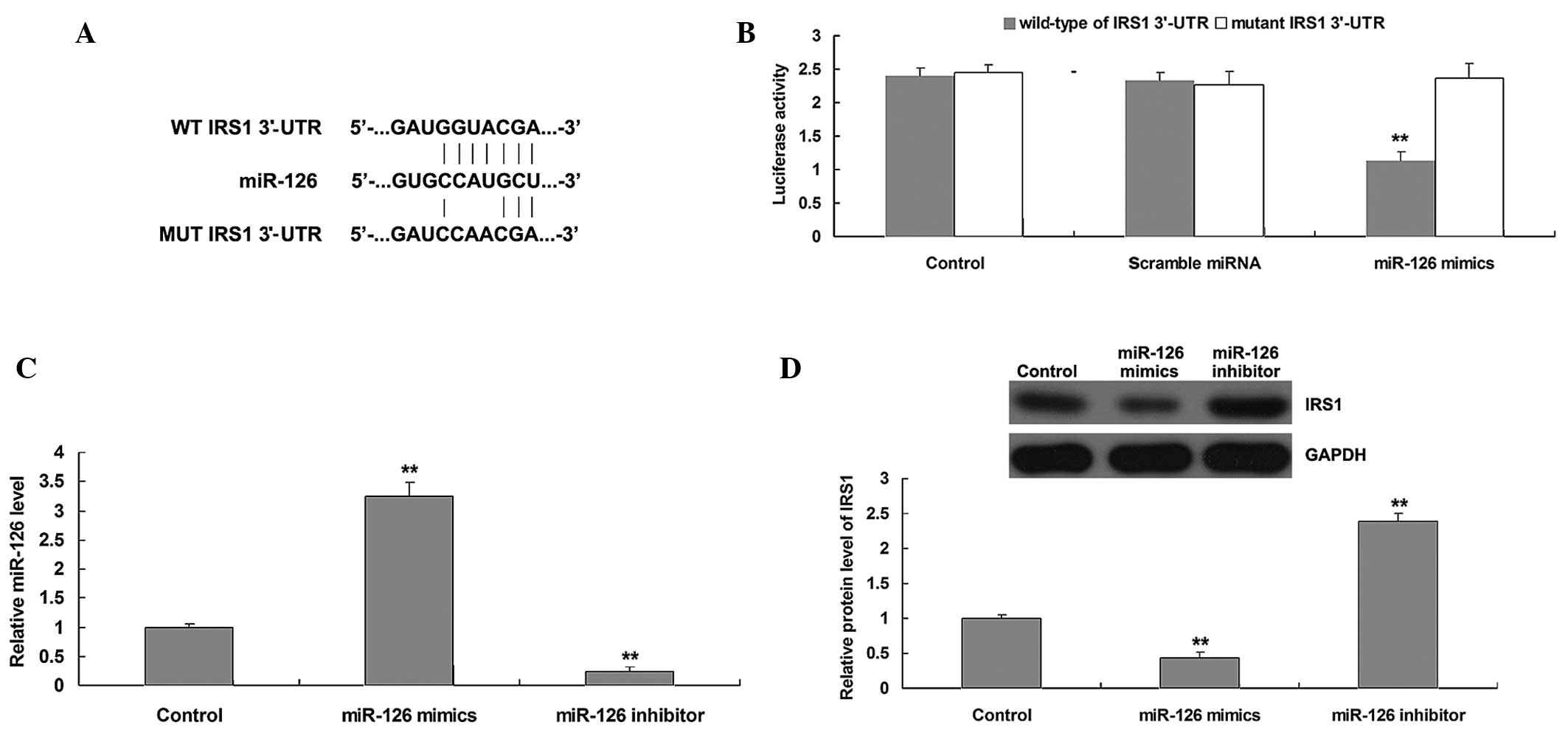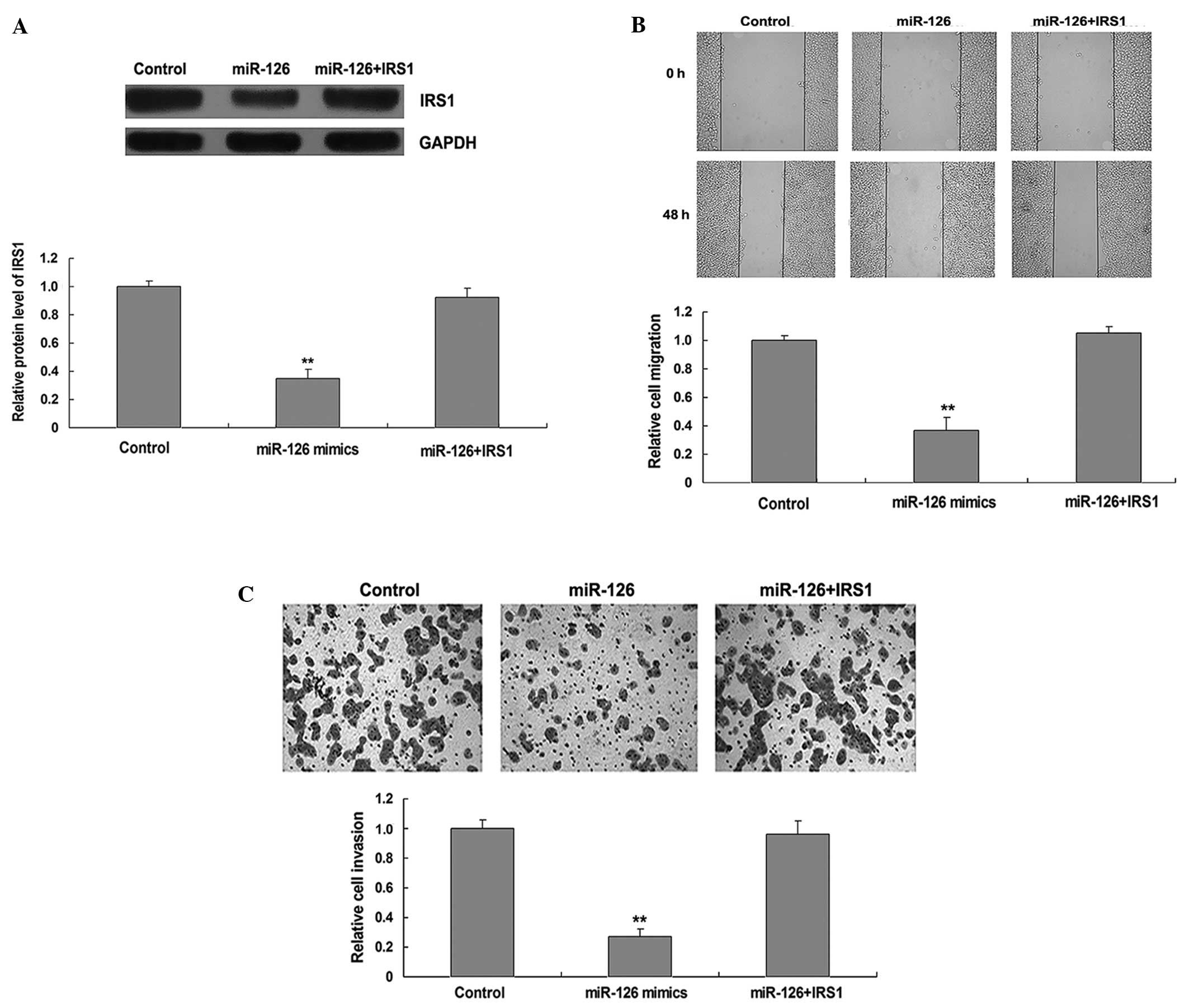|
1
|
Banno K, Yanokura M, Iida M, Masuda K and
Aoki D: Carcinogenic mechanisms of endometrial cancer, Involvement
of genetics and epigenetics. J Obstet Gynaecol Res. 40:1957–1967.
2014. View Article : Google Scholar : PubMed/NCBI
|
|
2
|
Amant F, Moerman P, Neven P, et al:
Endometrial cancer. Lancet. 366:491–505. 2005. View Article : Google Scholar : PubMed/NCBI
|
|
3
|
Ferlay J, Bray F, Pisani P and Parkin DM:
Cancer incidence, mortality and prevalence worldwide. GLOBOCAN
2002. Cancer Incidence, Mortality and Prevalence Worldwide. IARC
CancerBase 5. version 2.0. (Lyon, France). IARCPress. 2004.
|
|
4
|
Ramón LA, Braza-Boïls A, Gilabert J, et
al: microRNAs related to angiogenesis are dysregulated in
endometrioid endometrial cancer. Hum Reprod. 27:3036–3045. 2012.
View Article : Google Scholar : PubMed/NCBI
|
|
5
|
Ambros V: The functions of animal
microRNAs. Nature. 431:350–355. 2004. View Article : Google Scholar : PubMed/NCBI
|
|
6
|
Wang J, Chen X, Li P, et al: CRKL promotes
cell proliferation in gastric cancer and is negatively regulated by
miR-126. Chem Biol Interact. 206:230–238. 2013. View Article : Google Scholar : PubMed/NCBI
|
|
7
|
Huang TH and Chu TY: Repression of miR-126
and upregulation of adrenomedullin in the stromal endothelium by
cancer-stromal cross talks confers angiogenesis of cervical cancer.
Oncogene. 33:3636–3647. 2014. View Article : Google Scholar : PubMed/NCBI
|
|
8
|
Zhou Y, Feng X, Liu YL, Ye SC, Wang H, Tan
WK, Tian T, Qiu YM and Luo HS: Down-regulation of miR-126 is
associated with colorectal cancer cells proliferation, migration
and invasion by targeting IRS-1 via the AKT and ERK1/2 signaling
pathways. PLoS One. 8:e812032013. View Article : Google Scholar : PubMed/NCBI
|
|
9
|
Vergho D, Kneitz S, Rosenwald A, Scherer
C, Spahn M, Burger M, Riedmiller H and Kneitz B: Combination of
expression levels of miR-21 and miR-126 is associated with
cancer-specific survival in clear-cell renal cell carcinoma. BMC
Cancer. 14:252014. View Article : Google Scholar : PubMed/NCBI
|
|
10
|
Taverna S, Amodeo V, Saieva L, Russo A and
Giallombardo M: DeL eo G and Alessandro R: Exosomal shuttling of
miR-126 in endothelial cells modulates adhesive and migratory
abilities of chronic myelogenous leukemia cells. Mol Cancer.
13:1692014. View Article : Google Scholar : PubMed/NCBI
|
|
11
|
Zhang C, Bao W, Rong Y, Yang H, Bowers K,
Yeung E and Kiely M: Genetic variants and the risk of gestational
diabetes mellitus, A systematic review. Hum Reprod Update.
19:376–390. 2013. View Article : Google Scholar : PubMed/NCBI
|
|
12
|
Copps KD and White MF: Regulation of
insulin sensitivity by serine/threonine phosphorylation of insulin
receptor substrate proteins IRS1 and IRS2. Diabetologia.
55:2565–2582. 2012. View Article : Google Scholar : PubMed/NCBI
|
|
13
|
Hua SF, Xue FX, Zhang LZ, Wang YM and Zhao
J: Expression and activation of insulin receptor substrate-1 in
endometrial carcinoma. Zhonghua Fu Chan Ke Za Zhi. 43:437–441.
2008.(In Chinese). PubMed/NCBI
|
|
14
|
Moncharmont C, Levy A, Guy JB, Falk AT,
Guilbert M, Trone JC, Alphonse G, Gilormini M, Ardail D, Toillon
RA, et al: Radiation-enhanced cell migration/invasion process: A
review. Crit Rev Oncol Hematol. 92:133–142. 2014. View Article : Google Scholar : PubMed/NCBI
|
|
15
|
Wakabayashi S: A case of infantile autism
who became able to communicate by writing (author's transl).
Seishin Shinkeigaku Zasshi. 75:339–357. 1973.(In Japanese).
PubMed/NCBI
|
|
16
|
Bouyssou JM, Manier S, Huynh D, Issa S,
Roccaro AM and Ghobrial IM: Regulation of microRNAs in cancer
metastasis. Biochim Biophys Acta. 1845:255–265. 2014.PubMed/NCBI
|
|
17
|
Tavazoie SF, Alarcón C, Oskarsson T, Padua
D, Wang Q, Bos PD, Gerald WL and Massagué J: Endogenous human
microRNAs that suppress breast cancer metastasis. Nature.
451:147–152. 2008. View Article : Google Scholar : PubMed/NCBI
|
|
18
|
Kim MK, Jung SB, Kim JS, Roh MS, Lee JH,
Lee EH and Lee HW: Expression of microRNA miR-126 and miR-200c is
associated with prognosis in patients with non-small cell lung
cancer. Virchows Arch. 465:463–471. 2014. View Article : Google Scholar : PubMed/NCBI
|
|
19
|
Feng R, Chen X, Yu Y, Su L, Yu B, Li J,
Cai Q, Yan M, Liu B and Zhu Z: miR-126 functions as a tumour
suppressor in human gastric cancer. Cancer Lett. 298:50–63. 2010.
View Article : Google Scholar : PubMed/NCBI
|
|
20
|
Jia AY, Castillo-Martin M, Bonal DM,
Sánchez-Carbayo M, Silva JM and Cordon-Cardo C: MicroRNA-126
inhibits invasion in bladder cancer via regulation of ADAM9. Br J
Cancer. 110:2945–2954. 2014. View Article : Google Scholar : PubMed/NCBI
|
|
21
|
Li Z, Li N, Wu M, Li X, Luo Z and Wang X:
Expression of miR-126 suppresses migration and invasion of colon
cancer cells by targeting CXCR4. Mol Cell Biochem. 381:233–242.
2013. View Article : Google Scholar : PubMed/NCBI
|
|
22
|
Li N, Li X, Huang S, Shen S and Wang X:
miR-126 inhibits colon cancer proliferation and invasion through
targeting IRS1, SLC7A5 and TOM1 gene. Zhong Nan Da Xue Xue Bao Yi
Xue Ban. 38:809–817. 2013.(In Chinese). PubMed/NCBI
|
|
23
|
Fernandez-Twinn DS, Alfaradhi MZ,
Martin-Gronert MS, Duque-Guimaraes DE, Piekarz A,
Ferland-McCollough D, Bushell M and Ozanne SE: Downregulation of
IRS-1 in adipose tissue of offspring of obese mice is programmed
cell-autonomously through post-transcriptional mechanisms. Mol
Metab. 3:325–333. 2014. View Article : Google Scholar : PubMed/NCBI
|
|
24
|
McCampbell AS, Harris HA, Crabtree JS,
Winneker RC, Walker CL and Broaddus RR: Loss of inhibitory insulin
receptor substrate-1 phosphorylation is an early event in mammalian
target of rapamycin-dependent endometrial hyperplasia and
carcinoma. Cancer Prev Res (Phila). 3:290–300. 2010. View Article : Google Scholar : PubMed/NCBI
|
|
25
|
Wang Y, Hu C, Cheng J, Chen B, Ke Q, Lv Z,
Wu J and Zhou Y: MicroRNA-145 suppresses hepatocellular carcinoma
by targeting IRS1 and its downstream Akt signaling. Biochem Biophys
Res Commun. 446:1255–1260. 2014. View Article : Google Scholar : PubMed/NCBI
|
|
26
|
Yang M, Shan X, Zhou X, Qiu T, Zhu W, Ding
Y, Shu Y and Liu P: miR-1271 regulates cisplatin resistance of
human gastric cancer cell lines by targeting IGF1R, IRS1, mTOR, and
BCL2. Anticancer Agents Med Chem. 14:884–891. 2014. View Article : Google Scholar : PubMed/NCBI
|
|
27
|
Porter HA, Perry A, Kingsley C, Tran NL
and Keegan AD: IRS1 is highly expressed in localized breast tumors
and regulates the sensitivity of breast cancer cells to
chemotherapy, while IRS2 is highly expressed in invasive breast
tumors. Cancer Lett. 338:239–248. 2013. View Article : Google Scholar : PubMed/NCBI
|
|
28
|
Shaw LM: Identification of insulin
receptor substrate 1 (IRS-1) and IRS-2 as signaling intermediates
in the alpha6beta4 integrin-dependent activation of
phosphoinositide 3-OH kinase and promotion of invasion. Mol Cell
Biol. 21:5082–5093. 2001. View Article : Google Scholar : PubMed/NCBI
|
|
29
|
Canonici A, Steelant W, Rigot V,
Khomitch-Baud A, Boutaghou-Cherid H, Bruyneel E, Van Roy F,
Garrouste F, Pommier G and André F: Insulin-like growth factor-I
receptor, E-cadherin and alpha v integrin form a dynamic complex
under the control of alpha-catenin. Int J Cancer. 122:572–582.
2008. View Article : Google Scholar : PubMed/NCBI
|
|
30
|
Li X, Wang F and Qi Y: MiR-126 inhibits
the invasion of gastric cancer cell in part by targeting Crk. Eur
Rev Med Pharmacol Sci. 18:2031–2037. 2014.PubMed/NCBI
|
|
31
|
Liu LY, Wang W, Zhao LY, Guo B, Yang J,
Zhao XG, Hou N, Ni L, Wang AY, Song TS, et al: Mir-126 inhibits
growth of SGC-7901 cells by synergistically targeting the oncogenes
PI3KR2 and Crk, and the tumor suppressor PLK2. Int J Oncol.
45:1257–1265. 2014.PubMed/NCBI
|


















